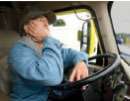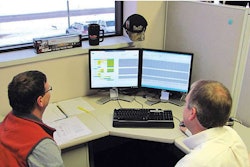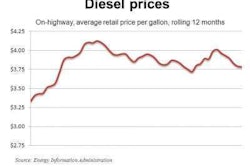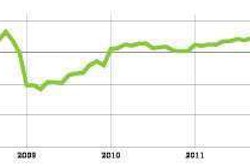Asleep at the Wheel
Overweight drivers soon may be under the microscope for sleep apnea risk
Sleep apnea affects roughly 6 percent of Americans. The likelihood of someone developing the disorder increases with age and higher body mass index, a number calculated from an individual’s height and weight to determine body fatness.
Commercial vehicle drivers – given their sedentary lifestyle and the aging population of the driver work force – are at increased risk of developing sleep apnea. The Federal Motor Carrier Safety Administration estimates as much as 28 percent of commercial driver’s license holders suffer from sleep apnea. Soon, those drivers may face intense scrutiny from medical examiners.
Current regulations don’t require sleep apnea screening above a certain BMI threshold.
For years, safety advocacy and medical groups have been calling for more stringent sleep apnea testing regulations as a way to reduce crash risk, and FMCSA soon may take action.
At last month’s joint meeting of FMCSA’s Motor Carrier Safety Advisory Committee and Medical Review Board, the two groups offered data that showed a correlation between drivers with moderate to severe sleep apnea and crash risk. Charles Czeisler, director of the Division of Sleep Medicine at Harvard’s Medical School, said that fatal motor vehicle crashes involving drowsy driving result in 7,500 deaths annually. According to Czeisler, that’s 2,000 more deaths than those caused by distracted driving, a problem that has been and remains in FMCSA’s cross hairs.
At the meeting, the two groups proposed that FMCSA issue guidance to medical examiners to refer commercial drivers with BMIs of 35 or more for obstructive sleep apnea evaluation. (A 6-foot-tall male weighing 258 pounds has a BMI of 35.)
If FMCSA adopts the recommendation, it would be a significant change from the current Federal Motor Carrier Safety Regulations that don’t require sleep apnea screening above a certain BMI threshold.
Rob Abbott, MCSAC member and vice president of safety policy for the American Trucking Associations, took exception to some of the data presented during the meeting, saying it has the potential to be misleading and is in need of further study. Abbott stressed the need to “hash that out in a public comment period.” ATA’s Safety Task Force supports sleep disorder screening requirements for the physical qualification process of drivers, but says any federal regulation should ensure screening and treatment results are cost-effective and enforceable.
The MCSAC/MRB proposed sleep apnea guidance also could shrink the truck driver pool: Of the 6 million commercial driver’s license holders, an estimated 30 percent (1.8 million) would exceed the 35 BMI threshold and require testing. In addition to testing requirements, the guidance calls for disqualifying drivers that:
• Have reported excessive daytime sleepiness;
• Have had an accident associated with falling asleep;
• Exhibit apnea-hypopnea index scores of 20 or greater until they’ve had effective treatment;
• Have had surgery to correct apnea and await post-operative evaluation; and
• Have been found to be effectively noncompliant with treatment.
Reducing the number of truck-related crashes associated with drowsy driving is a necessary and worthwhile endeavor, but a potential guidance or regulation that affects such a large percentage of the driver population coupled 
JEFF CRISSEY is Editor of Commercial Carrier Journal. E-mail [email protected].
Are Your Drivers At Risk?
FMCSA has identified these factors that put drivers at higher risk for sleep apnea:
• Family history of sleep apnea

• Large neck size (17 inches or greater for men, 16 inches or greater for women)
• Age 40 and older
• Having a small upper airway
• Having a recessed chin, small jaw or large overbite
• Smoking and alcohol use
• Ethnicity












